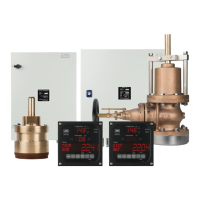10-7
Figure 2 Active echo volumes
The signals received can be regarded as two times nine layers of ”snapshots” of the flow of
particles under the ship. Using correlation technique it is possible to compare how much the
signals differ in time. Knowing the distance between the crystals it is easy to calculate the
speed of the particles and hence the speed of the ship through the water.
Depending on ship dimensions and transducer location the measured volume may lie within the
boundary layer of the ship and necessitate speed calibration (see 3.3.1 Boundary layer and
calibration).
3.2 Signal processing
The echo signal measured from the water volume will change in intensity depending on the
particles that exist within the measured water volume. This modulation will create a time
varying signal pattern. All that is needed to calculate the speed is finding the displacement
needed for a pattern to repeat in the other channel.
3.3 Correlation functions
Correlation technique is used to calculate the time delay IJ (tau) between signal S1 and S2. The
largest value of the correlation function maximises the similarity of the signals.
3.3.1 Boundary layer and calibration
When making speed through the water the ship will push and drag water in the travelling
direction. The effect is that water close to the hull moves slower relative to the ship than water
further away. The affected layer with lower relative speed is called the boundary layer, see
Figure 3.
S1 S2
Hull
Transducer
½ echo delay time
½ receiver duration
Relative water flow
Ship’s direction

